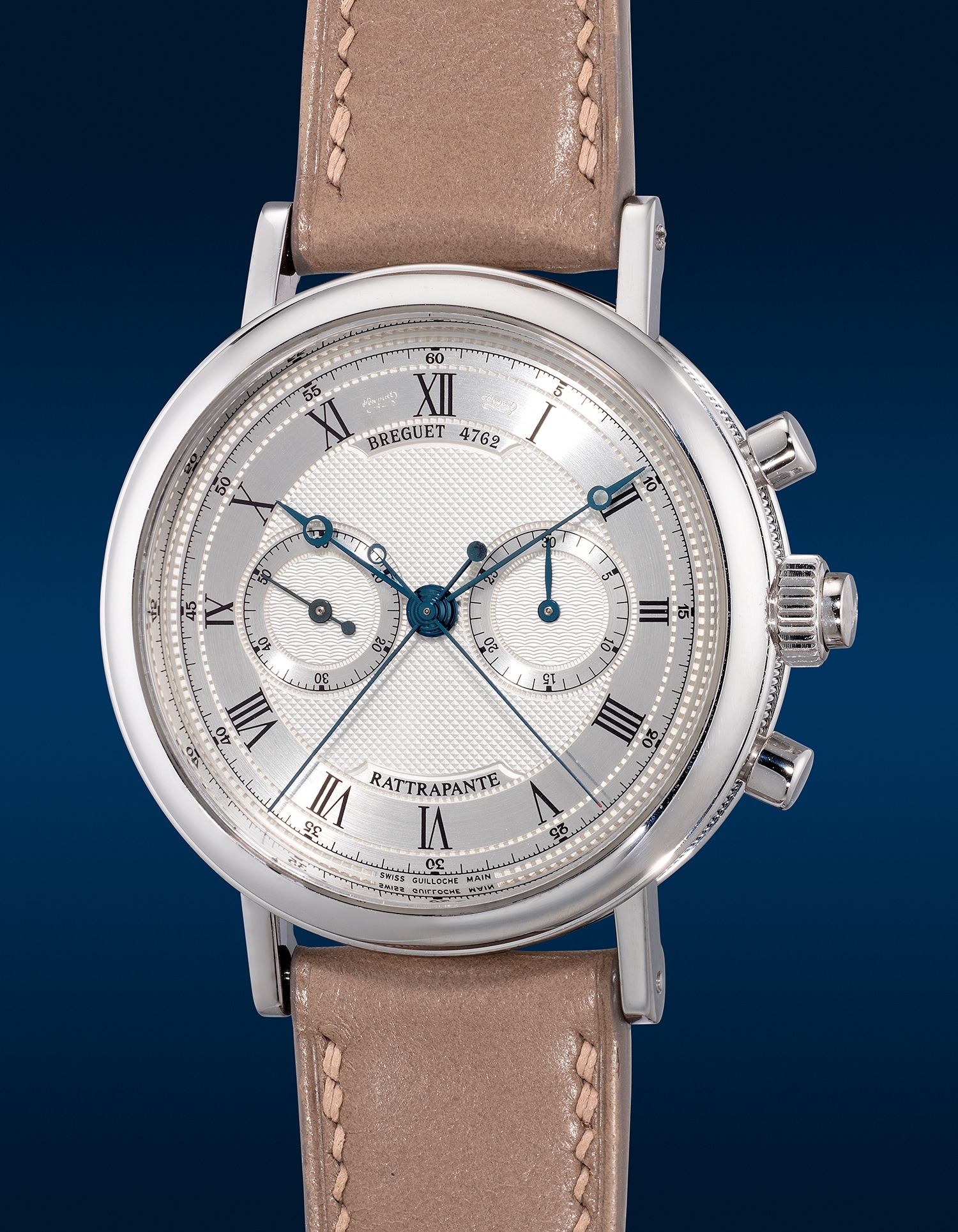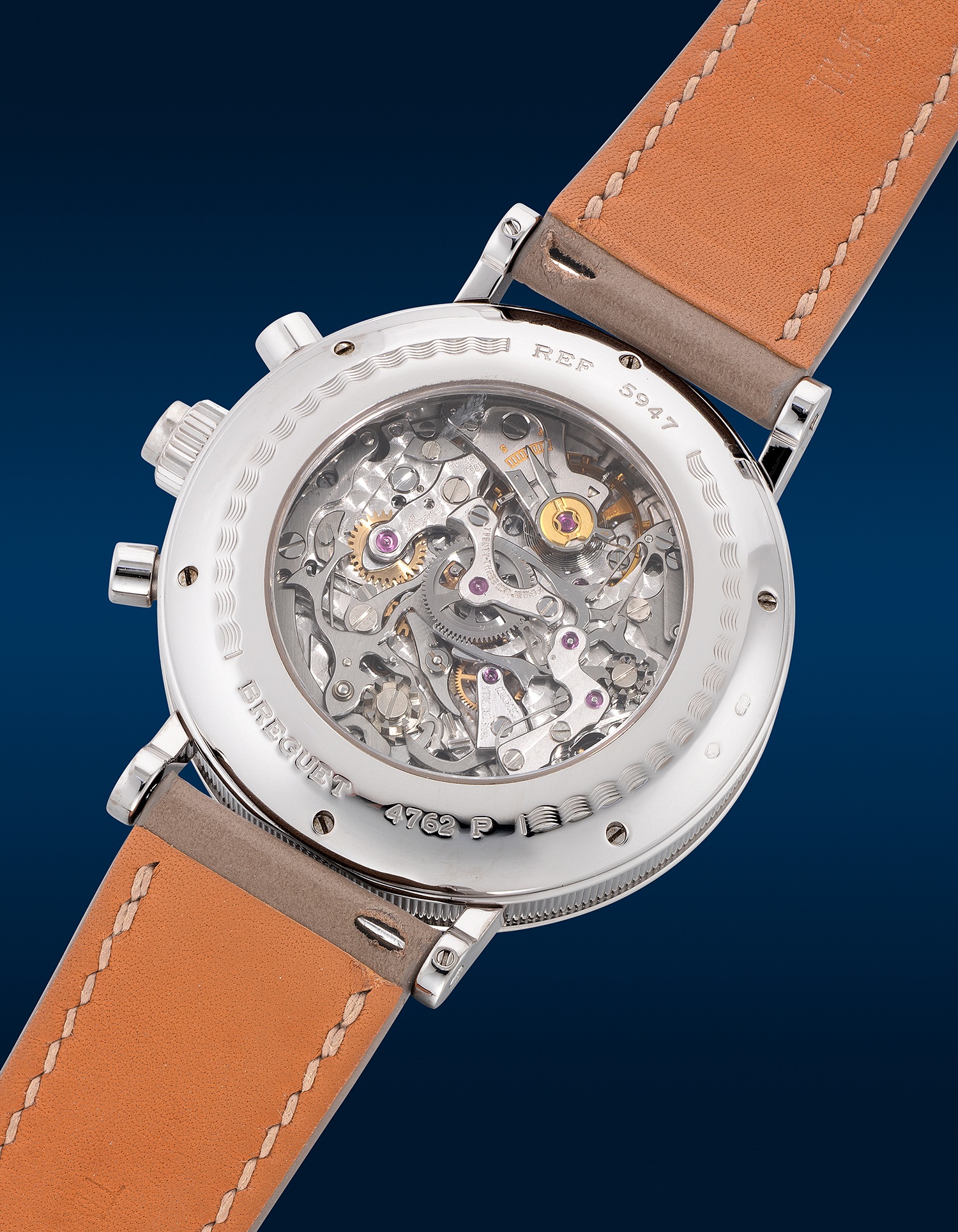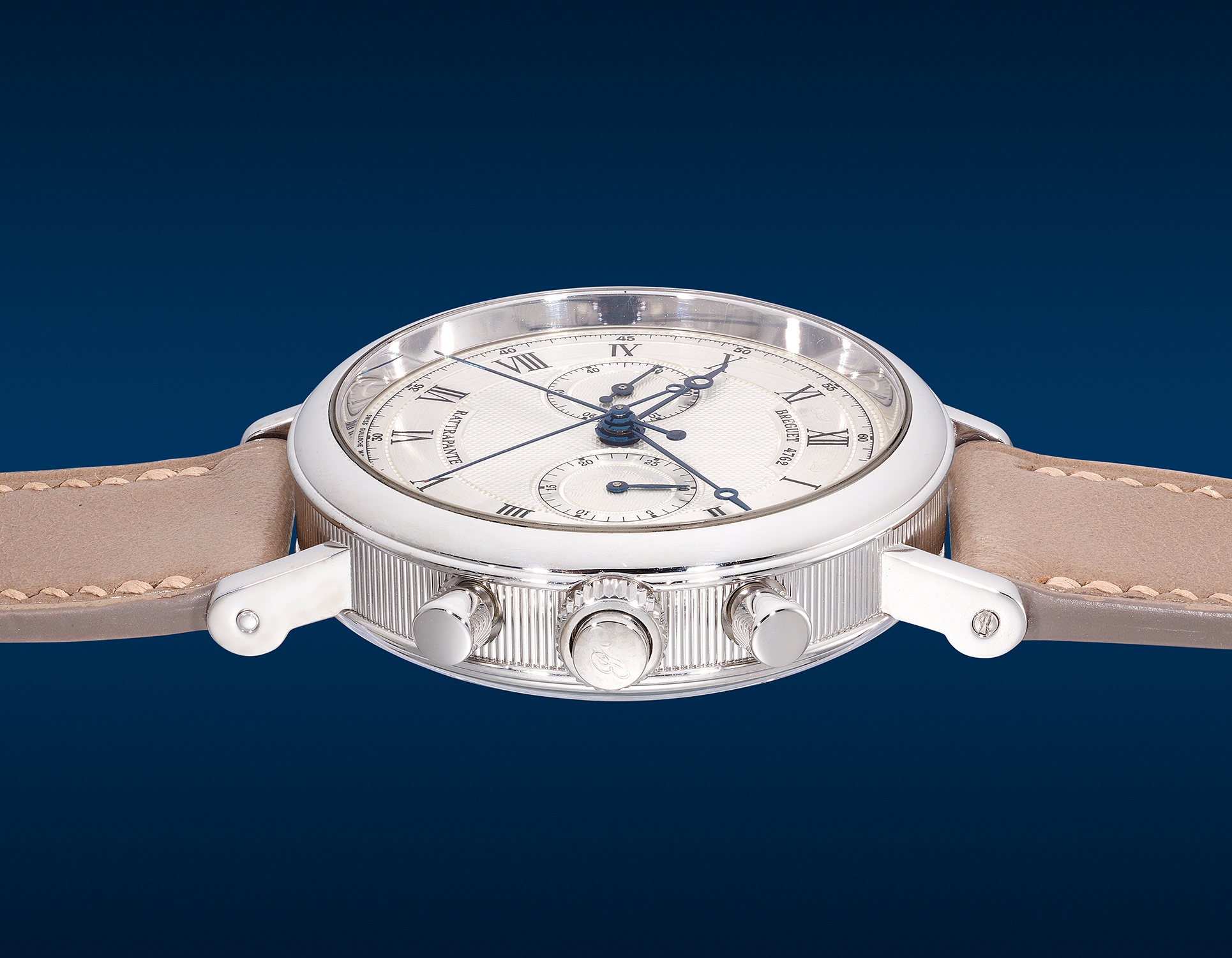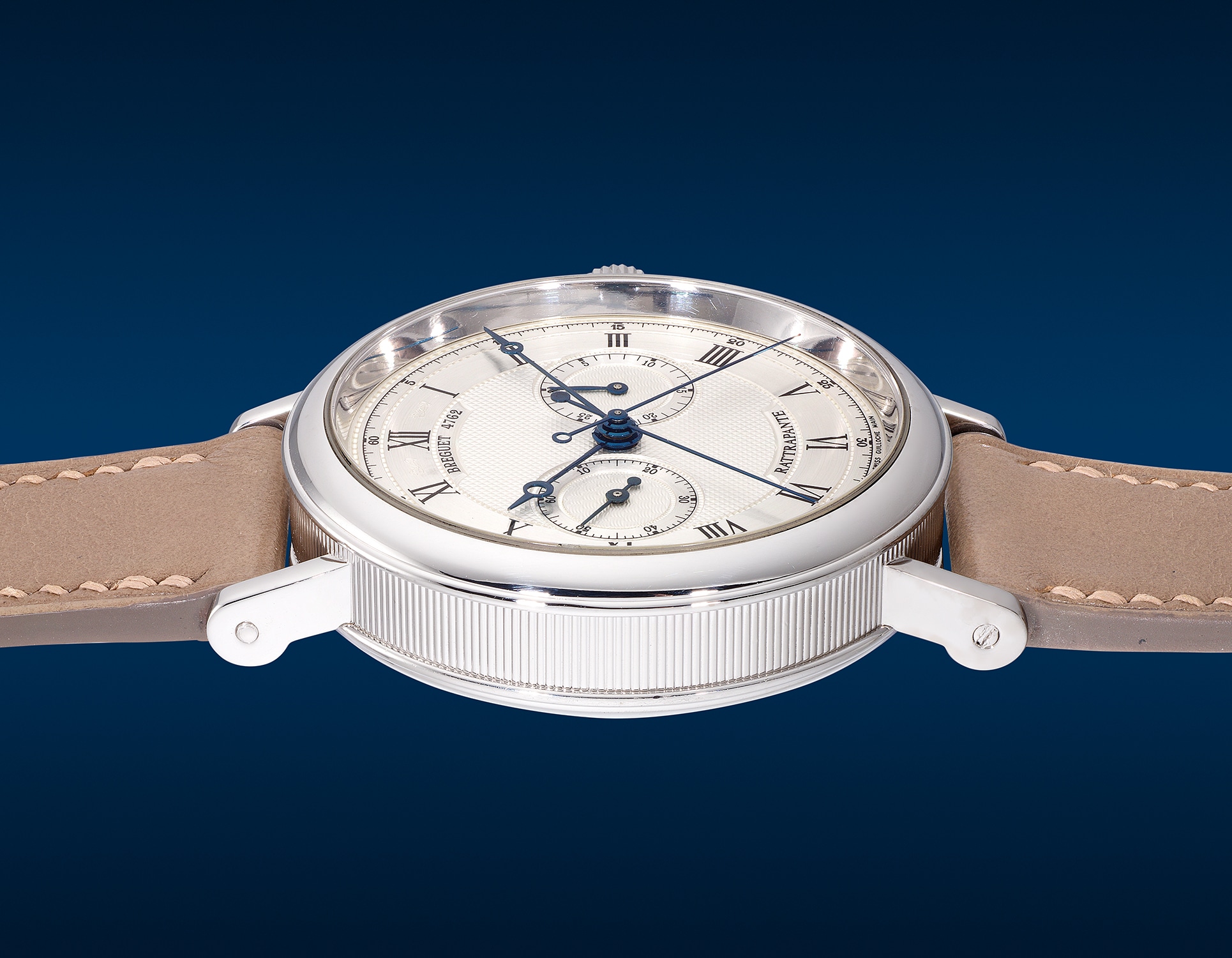







8023
Breguet
Ref. 5947
Classique
A very fine and attractive white gold split-seconds chronograph wristwatch with guilloché dial
Full-Cataloguing
- Breguet's mastery extends beyond tourbillons, as he has excelled in other complications, leaving a lasting legacy. Among these complications, the chronograph holds a special place, being one of the most sought-after and beloved features in a wristwatch. Renowned for its intricate movement architecture, practicality, and aesthetically pleasing finish, the chronograph has captured the hearts of watch enthusiasts worldwide.
- However, the current timepiece takes it a step further by featuring a split-seconds chronograph, allowing for the simultaneous measurement of two series of events. Adding to its allure is the mesmerizing guilloche dial and coin-edged caseband, both signatures of Breguet's craftsmanship. Whether admired from the front, side or back, this watch captivates with its exceptional design and details.
Breguet
Swiss | 1775Established in 1775 by Abraham Louis Breguet, widely considered the greatest watchmaker of all time, the storied brand continues to thrive in the modern era, creating exceptional high-end watches as the Swatch Group's premier prestige brand. Some of the most important and lasting inventions in watchmaking are attributed to Abraham Louis Breguet, including the tourbillon, shock resistance and the use of hammers and gongs employed in nearly all minute repeating watches made since.
Eighteenth and nineteenth century Breguet pocketwatches are especially sought-after by collectors, and many of them were made for the elite of European society, including Napoléon and Marie Antoinette. Key wristwatches from the twentieth century include oversized dress watches, two-register chronographs, triple calendars and Type XX aviator's chronographs made for the French military and civilians.